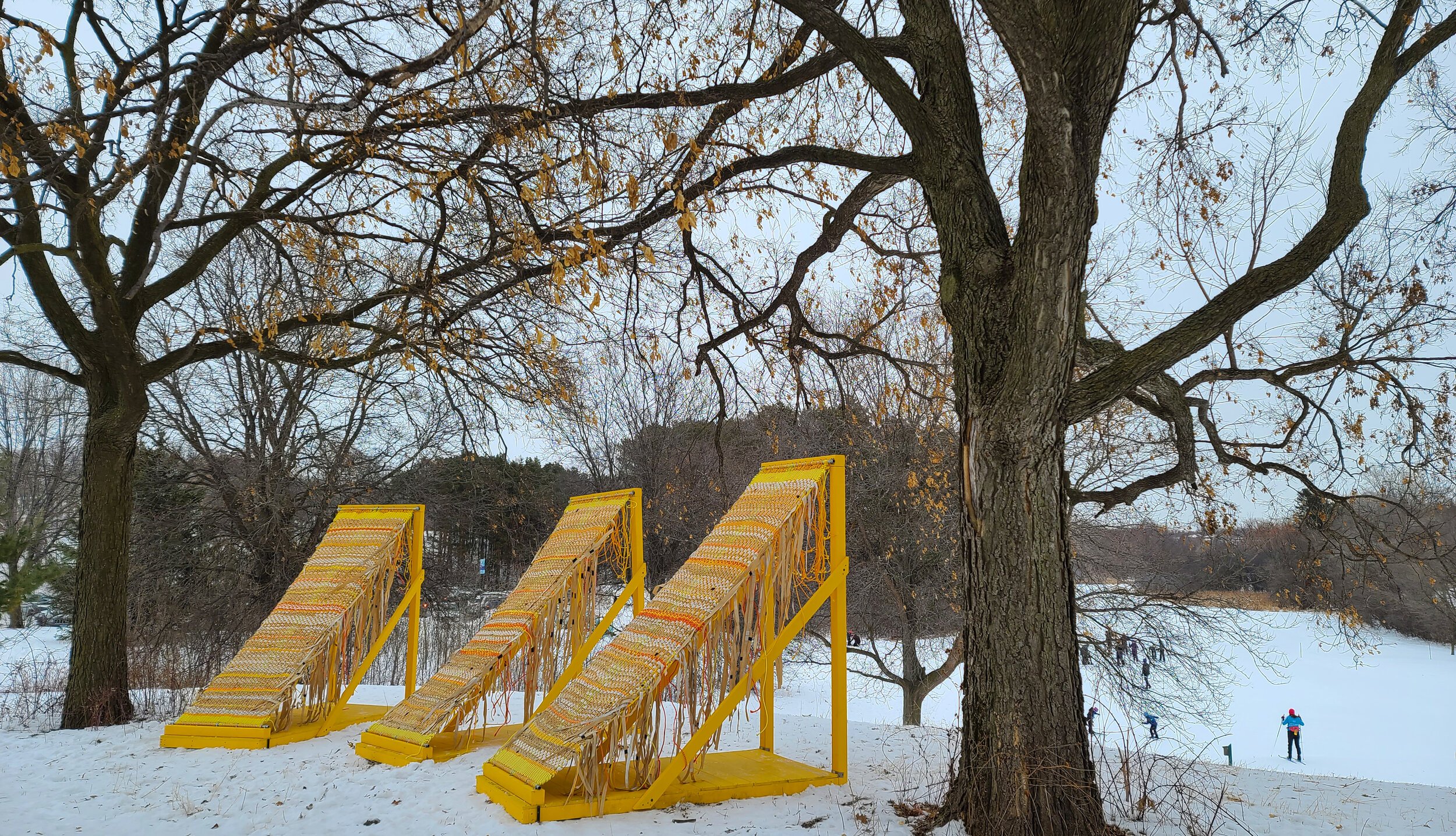
THE PARK: Eighteen years ago, my husband and I moved from Duluth into the Willard Hay neighborhood of North Minneapolis. Living within blocks of Theodore Wirth Parkway has shaped my experience of living in this city. Over the years I have spent countless hours on foot, wheels, or skis traversing this land from Quaking Bog to Elouise Butler to Wirth Lake to Sunset Hill. This is home to me. This exact spot was one of three potential sites that I considered for this project and the one closest to the Trailhead and other festival activities. I wanted a place that felt untouched in comparison to the expertly crafted ski trails, that brought attention to the broader landscape and wild-natural spirit of the earth.
THE SEASON’S ACTIVITY: Growing-up in a Nordic-skiing family, our dad had us on skis by the time we could walk. The third of five kids, and the only one not to compete at the national/world level in Biathlon, I am grateful for the muscle memory of those early years on skis. As it was, I grew-up emotionally invested in Nordic sports, enthusiastically supporting my older brothers as they transitioned from competing to coaching and most recently to announcing the first Olympic gold medal for the US in women’s cross-country skiing. It took the commitment and endurance of so many in this country to see one rise to “GOOLD”… So, to bring my artwork into the realm/venue of skiing is a bit like giving voice to the little girl who rode along on that long road of practice, of passion, and commitment to purpose and acknowledging my own journey along side my big brothers.
THE SITE: The site is located near the Trailhead in Theodore Wirth Park. Two large sleeping trees define the place. Their trunks frame the small swath of flat earth at the crest of a hill and the expansive view of the park beyond. Their branches soar above creating a sense of cover and soft containment. I imagine them mirrored as roots below the surface of the earth, completing their full-circle embrace of this spot. Three structures are arranged in a circular formation with the archways focused outward toward the park, the Minneapolis skyline, and the community.

LAND ACKNOWLEDGEMENT
I acknowledge the Anishinaabeg and Dakhóta people who live and have always lived in reciprocity with this land going back to time immemorial. With gratitude for their wisdom, their reverent diligence in keeping ancestral knowledge alive, and the enduring generosity of their spirit across generations, I reject the erasure of their experience within the story-telling of this place and humbly yearn to make space for their voices.
